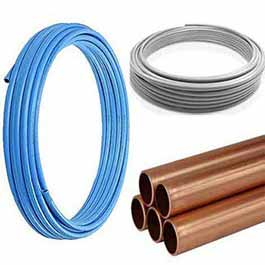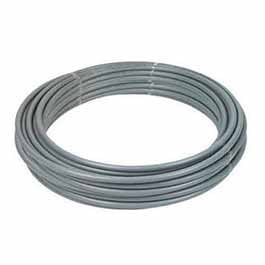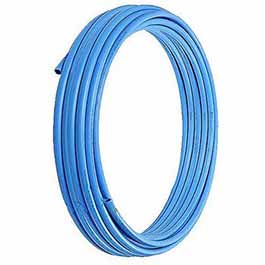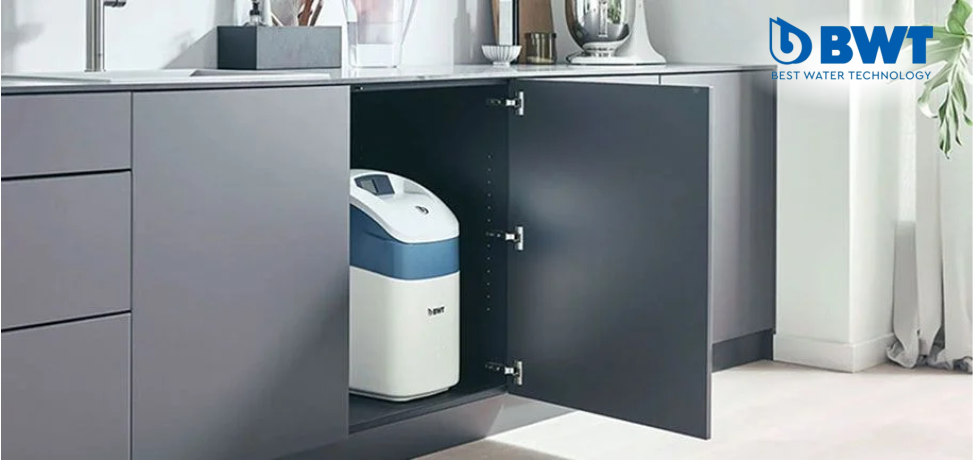Plumbing Pipe
Useful Blog Posts & Guides
Find out more about Plumbing Pipe
Plumbing pipes are essential components of any building's infrastructure, responsible for transporting water and waste safely and efficiently. These pipes come in various materials, sizes, and configurations, each designed for specific applications within the plumbing system. Understanding the different types of plumbing pipes and their uses is crucial for ensuring a reliable and long-lasting plumbing system.
One of the most common types of plumbing pipes is copper. Copper pipes are known for their durability, corrosion resistance, and ability to handle both hot and cold water. They are often used for water supply lines, as they do not leach harmful chemicals into the water. Copper pipes are typically joined using soldering or compression fittings, creating a strong and leak-free connection.
Another popular option is PVC (polyvinyl chloride) pipes. PVC pipes are lightweight, inexpensive, and easy to install, making them a favourite for drainage, waste, and vent (DWV) systems. PVC pipes are resistant to corrosion and chemical damage, making them suitable for carrying wastewater and other non-potable liquids. They are typically joined using primer and solvent cement, creating a watertight seal.
PEX (cross-linked polyethylene) pipes have gained popularity in recent years due to their flexibility and ease of installation. PEX pipes are made from a type of plastic that can bend and flex without kinking, making them ideal for running water lines through walls and floors. PEX pipes are also resistant to freezing and bursting, making them a good choice for cold climates. They are typically joined using crimp rings or expansion fittings.
In summary, plumbing pipes are crucial for transporting water and waste in buildings, and they come in various materials, including copper, PVC, and PEX. Each type of pipe has its own advantages and disadvantages, making it important to choose the right pipe for the specific application. Understanding the different types of plumbing pipes and their uses is essential for ensuring a reliable and long-lasting plumbing system.
Plumbing Pipe FAQs
What are the different types of plumbing pipes?
Plumbing systems rely on various types of pipes, each designed with specific properties to suit different applications. The most common types include copper, PVC, CPVC, PEX, and galvanized steel, each with its own set of advantages and disadvantages.
Copper pipes are highly regarded for their durability, corrosion resistance, and ability to handle both hot and cold water. They are often used for water supply lines due to their resistance to leaching harmful chemicals into the water. Copper pipes are joined using soldering or compression fittings, creating a strong, leak-free connection. However, copper is more expensive than other materials, making it a less cost-effective option for some applications.
PVC (polyvinyl chloride) pipes are a popular choice for drainage, waste, and vent (DWV) systems. They are lightweight, inexpensive, and easy to install. PVC pipes are resistant to corrosion and chemical damage, making them suitable for carrying wastewater and other non-potable liquids. These pipes are typically joined using primer and solvent cement, creating a watertight seal. However, PVC pipes are not suitable for hot water applications, as they can soften and deform at high temperatures.
CPVC (chlorinated polyvinyl chloride) pipes are similar to PVC but are designed to handle higher temperatures. They are often used for hot water supply lines in residential and commercial plumbing systems. CPVC pipes share PVC's resistance to corrosion and chemical damage and are also joined using solvent cement. While more heat-resistant than PVC, CPVC is still less flexible than other options like PEX.
PEX (cross-linked polyethylene) pipes have gained popularity due to their flexibility and ease of installation. PEX pipes can bend and flex without kinking, making them ideal for running water lines through walls and floors. They are resistant to freezing and bursting, making them a good choice for cold climates. PEX pipes are typically joined using crimp rings or expansion fittings. Their flexibility and resistance to freezing make them a versatile option for both hot and cold water applications.
Galvanized steel pipes were once commonly used for water supply lines, but their use has declined due to their tendency to corrode over time. As the zinc coating wears away, the steel beneath can rust, leading to reduced water flow and potential leaks. Galvanized steel pipes are heavy and require threading for connections, making them more difficult to install than other types of pipes. They are generally only found in older homes and are not recommended for new installations.
In summary, the choice of plumbing pipe depends on the specific application, budget, and local plumbing codes. Copper is durable and safe for potable water, PVC is cost-effective for DWV systems, CPVC handles high temperatures, PEX offers flexibility and freeze resistance, and galvanized steel is mostly found in older systems. Understanding the properties of each type of pipe is essential for a reliable and efficient plumbing system.
What size plumbing pipe do I need?
Choosing the correct size of plumbing pipe is crucial for ensuring efficient water flow and preventing issues like low water pressure or noisy pipes. The size of the pipe needed depends on several factors, including the type of fixture it serves, the distance the water travels, and the water pressure in your area.
For main water supply lines entering a home, a 3/4-inch pipe is generally recommended. This size provides sufficient water volume for most households, accommodating multiple fixtures running simultaneously. However, for larger homes or those with high water demand, a 1-inch pipe may be necessary to ensure adequate water pressure throughout the house.
Individual fixtures, such as sinks, toilets, and showers, typically require smaller pipe sizes. A 1/2-inch pipe is commonly used for supplying water to these fixtures. This size is adequate for delivering the necessary flow rate without causing excessive pressure drops. For fixtures located far from the main water supply, using a slightly larger pipe size, such as 3/4-inch, can help maintain adequate pressure.
Drainage pipes also vary in size depending on the fixture they serve. Sinks and showers typically use 1 1/2-inch drain pipes, while toilets require a larger 3-inch drain pipe to handle solid waste. The main drain line that carries wastewater out of the house is usually 3 or 4 inches in diameter, depending on the size of the house and the number of fixtures connected to it.
When determining the appropriate pipe size, it's essential to consider the length of the pipe run. Longer pipe runs can result in significant pressure drops due to friction. In such cases, using a larger pipe size can help compensate for the pressure loss and maintain adequate flow. Consulting a plumbing professional or using a pipe sizing chart can help you accurately calculate the correct pipe size based on the length of the run and the desired flow rate.
Local plumbing codes also dictate minimum pipe sizes for various applications. These codes are designed to ensure safe and efficient plumbing systems and must be followed when installing or modifying plumbing. Always check with your local building department to ensure your plumbing meets the required standards.
In summary, selecting the right size of plumbing pipe involves considering the type of fixture, the distance the water travels, the water pressure, and local plumbing codes. Using the appropriate pipe size ensures adequate water flow, prevents pressure drops, and complies with safety regulations, resulting in a reliable and efficient plumbing system.
How do I connect plumbing pipes?
Connecting plumbing pipes involves several methods, each suited to different materials and applications. The most common techniques include soldering, using compression fittings, employing threaded connections, and utilising push-fit fittings. Each method has its own set of tools and procedures, and the choice depends on the type of pipe, the complexity of the job, and your skill level.
Soldering is a traditional method for joining copper pipes, creating a strong and leak-free connection. The process involves cleaning the pipe ends, applying flux, heating the joint with a torch, and melting solder into the joint. Capillary action draws the solder into the gap, creating a sealed bond. Soldering requires some skill and practice to achieve reliable results, but it is a durable and cost-effective option for copper plumbing.
Compression fittings offer a mechanical method for joining pipes without soldering. These fittings consist of a compression nut, a compression ring (or ferrule), and the fitting body. When the nut is tightened, the ferrule compresses against the pipe, creating a watertight seal. Compression fittings are easy to install and are suitable for connecting copper, CPVC, and PEX pipes. However, they may not be as strong as soldered joints and should be used in accessible locations for easy maintenance.
Threaded connections are commonly used for joining galvanized steel and brass pipes. The pipe ends are threaded using a pipe threading tool, and then screwed into threaded fittings. Pipe joint compound or Teflon tape is applied to the threads to create a watertight seal. Threaded connections are robust and can withstand high pressure, but they require precise threading and tightening to prevent leaks.
Push-fit fittings, such as those made by SharkBite, provide a quick and easy way to connect pipes without soldering, gluing, or threading. These fittings have internal stainless steel teeth that grip the pipe when it is pushed into the fitting. An O-ring creates a watertight seal. Push-fit fittings are suitable for copper, CPVC, and PEX pipes and are ideal for quick repairs or installations in tight spaces. They are more expensive than other types of fittings, but their ease of use makes them a popular choice for DIYers.
When connecting plumbing pipes, it's essential to prepare the pipe ends properly. Clean the pipes thoroughly to remove any dirt, debris, or corrosion. Use a pipe cutter to ensure a clean, square cut. Deburr the pipe ends to remove any sharp edges that could damage the fitting or O-ring. Apply flux, pipe joint compound, or Teflon tape as needed to ensure a watertight seal. Tighten fittings to the correct torque to avoid leaks or damage to the pipe.
Always test the connections after installation to check for leaks. Turn on the water supply and inspect the joints carefully. If you find any leaks, tighten the fittings or disassemble and reassemble the joint, ensuring that all components are clean and properly aligned. If you're unsure about any aspect of connecting plumbing pipes, consult a qualified plumber to avoid costly mistakes or water damage.
In summary, connecting plumbing pipes involves various methods, including soldering, compression fittings, threaded connections, and push-fit fittings. Each method has its own advantages and disadvantages, and the choice depends on the type of pipe, the complexity of the job, and your skill level. Proper preparation, careful assembly, and thorough testing are essential for creating reliable and leak-free plumbing connections.





Shop our wide range of Plumbing Pipe at Trading Depot. Discover our wide range of high-quality plumbing pipes, ideal for residential, commercial, and industrial plumbing installations. Available in copper, plastic (uPVC, MDPE, PEX), and flexible options, our pipes ensure reliable water flow and long-lasting durability. Perfect for hot and cold water systems, central heating, and drainage applications. Easy to install and compliant with UK standards.